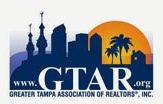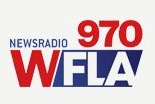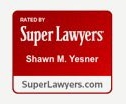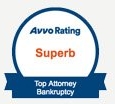Student Loan Modifications in Bankruptcy
Over forty-four million Americans have unpaid student loans totaling more than $1.5 trillion. Many student loan borrowers file bankruptcy cases due to the financial difficulties they encounter in repaying their student loans. Even though student loans are not dischargeable, similar to how IRS debt is non-dischargeable, there is still a benefit to filing bankruptcy – maybe you can use a chapter 7 liquidation bankruptcy or a chapter 13 reorganization bankruptcy to eliminate other debts, freeing up more income to repay those student loans (or other non-dischargeable debts).
There are certainly some exceptions to non-dischargeability of student loan debt. For example, there is developing case law in the situation where the school is overseas and a non-accredited schools. When the students/graduates get back home to the United States with a degree that doesn’t qualify for a job, those loans may be dischargeable by lawsuit filed within the bankruptcy against the student loan company. In addition, there is a general standard in bankruptcy court if you want to try to discharge your student loans based on some hardship. It is a fairly high standard at least here in the Middle District of Florida (the Bruner test, which I’ve discussed in different blog posts and podcasts). You basically have to prove that you are unable to perform any job that would allow you to repay your student loans. There has been some developing case law in this area, however, so check the Podcast and the Blog to learn about the newest developments. And again the standards vary bankruptcy court to bankruptcy court, area to area, state to state, so definitely check with a local bankruptcy attorney to see if you qualify for a hardship discharge under the Bankruptcy Code if you have student loans.
With this post, however, I wanted to talk about a new procedure set up by the Middle District of Florida. With this new guided modification process we may have a way to address high student loan payments within bankruptcy court.
Background
Bankruptcy is federal law and the Middle District of Florida spans from Jacksonville in the north, down to Orlando, West to Tampa, and South to Naples (including Fort Myers). Anything south of that “lightning bolt” so to speak is the Southern District and anything north of that “lightning bolt” is the Northern District of Florida. If you live in the Middle District of Florida, we are the first district in the country to roll out a process to modify student loans in bankruptcy court.
It is my hope that this process rolls out to other areas of the country after we take it through the wringer and after we get whatever feedback to improve the program. I know that, subsequent to the roll out in Florida, other states have put in programs to help lessen the burden of student loans, so it is important to check with a local attorney depending on where you live, and as these programs evolve.
Administrative Order
Here in Tampa Bay and the Middle District, the process is governed by a second amended administrative order from the United States Bankruptcy Court for the Middle District of Florida. That should tell you right off the bat there was an order that allowed this process and then that order was amended and now that order has been amended for the second time. Depending on when you’re reading this post, please double check with me or a local bankruptcy attorney to see if this version of the order still applies to you or if there happens to be a third amended, fourth amended, etc. order.
The Order establishing the modification program took effect October 1, 2019, and creates a student loan management program, the goal of which is to facilitate communication and the exchange of information in an efficient and transparent manner, and to encourage the parties to finalize a feasible and beneficial agreement under the administrative oversight of the United States Bankruptcy Court for the Middle District of Florida.
The order then goes on to set up some definitions. The process created by the administrative order can be used in Chapter 7, Chapter 11 reorganizations, and Chapter 13 bankruptcies. I have a feeling that the majority of these are going to occur in Chapter 13 cases but know that if you’re doing a Chapter 7 or individual Chapter 11 you can also utilize this process.
Document Portal
The process is governed by a document portal – much like mortgage foreclosure mediations. The Student Loan Modification management program will also have a portal where debtors, creditors, and the trustees can all communicate with each other in a secure location rather than having emails flying back and forth. One of the other definitions is that student loan repayment options run the full range of options, including, but not limited to, rehabilitation, consolidation, any IDR plan (Income Driven Repayment), or settlement. In other words, the student loan creditors should come to the table with all options.
The debtor has a few responsibilities: preparation of the student loan package (the SLM) and the debtor has to be current in payment of their filing fees. Typically, I’ll collect the full fee up front including the costs to file, so this is not an issue with my clients normally. The debtor then has to go to a portal and request the specific package from the specific student loan creditor, complete it, and then upload it to the portal to start the process.
The parties have to participate in good faith and if they don’t participate in good faith they may be subject to sanctions by the Court. I think this could be a great tool to help the student loan modification process to avoid the traps and pitfalls of the mortgage modification mediation process, because I do not believe that the lenders participate in the mortgage mediation process in good faith. I don’t think there’s any attempt by the mortgage servicers to “compromise” and I think the purpose of the mortgage modification process, as admitted by many creditors attorneys, is to determine if the borrower qualifies for a loan modification only.
The order specifies that there is a 180-day period to participate in the program, unless otherwise agreed to by the parties or ordered by the court. If you have a situation where you were at day 160 or 170, and gave the court some reasonable explanation as to why an extension was necessary, the Judge would likely extend the time period, but clearly the Court wants these agreements hammered out and settled as quickly as possible.
Dismissal as a Condition of Modification
One interesting thing that’s contained in the order is a statement that says the parties – debtor, creditor, trustee – cannot insist on dismissal of the bankruptcy case as a requirement of an agreement reached through the SLM program. The interesting thing is that Episode 42 of the Crushing Debt Podcast (then the Yesner Law Podcast) talked about Chapter 6.5 in bankruptcy. You aren’t going to find chapter 6.5 if you look in the Bankruptcy Code; that was slang made up by me to reflect dismissal of a Chapter 13 bankruptcy case after a successful mortgage modification to eliminate additional trustee fees caused by the modified payment being paid through the Chapter 13 plan. Within the Student Loan Program, the parties cannot insist on dismissal as a requirement (in other words, get a modification of the Student Loan and then dismiss the case), but if the debtor chooses to dismiss because it will eliminate the requirement to pay the Chapter 13 Trustee, that is the debtor’s decision, but not a requirement. The Court is now considering whether a case is filed in bad faith if you get a modification, then dismiss your case and keep the modification, and then refile the bankruptcy (at that point the mortgage is current, so you don’t have to pay it through the bankruptcy trustee, keeping your payments lower). I think the inclusion of this sentence in the student loan modification order is to address that scenario.
One of the other duties of the debtor is that within 14 days of the date when the SLM process has concluded the debtor must file with the court either a notice of the IDR plan that includes the payment amount or a notice of no resolution. An interesting issue here is that the IDR payment is based on the debtor’s income and the debtor’s ability to pay, so as the income goes up or down the IDR payment on an annual basis may go up or down. In other words, there may be a requirement to file some modified bankruptcy plan up or down every year. As a chapter 13 debtor, you have the requirement to submit your tax returns to the bankruptcy trustee every year plus commits any tax refunds to the bankruptcy plan every year, so the bankruptcy trustee is going to know that your income is going up or down. Previously, you may have wanted to use that to increase or decrease the IDR plan, and now you’re also going to have to disclose it to the bankruptcy trustee to have your bankruptcy payments increase or decrease annually.
Attorney Fees
The last thing contained in the Order is an ability for the bankruptcy attorney to make a little bit of extra money for helping with this process. The Bankruptcy Court did authorize a reasonable fee to the attorney not to exceed $1,500, in addition to whatever you pay to your bankruptcy attorney to file the bankruptcy case. For that additional $1,500 we have to review the payment options, file the notice of the student loan modification, prepare the initial student loan modification package, prepare any additional forms required through the program, submit all documents through the portal, file any required pleadings, and then prepare proposed orders and settlement papers if applicable. I have a feeling the student loan companies will prepare the settlement papers but debtor’s attorneys have to file anything else, so the court will give us an additional $1,500 to do so. Accordingly, when you’re talking to your bankruptcy attorney please get clear on what he or she is going to charge you and how that’s going to be charged. The Bankruptcy Court through the student loan modification program does also allow an additional $250.00 per year to recertify the debtors IDR plan if applicable.
Conclusion
That is a basic overview of the student loan modification program. Again, if this is something that you are interested in please contact me if you live in the Middle District of Florida. If you live outside of Florida or if you live outside the Middle District of Florida, please check with a local bankruptcy attorney. Hopefully we can do everyone proud down here in the Middle District and get this program really performing well and then take it to other districts. If and when I hear of any other programs, I will definitely let you know through the podcast, through the blog, or through my social media.
For more information on Student Loan negotiations or bankruptcy, please contact us to schedule a free initial consultation to discuss your options at 813-774-5737 or email me directly at shawn@yesnerlaw.com. Please also subscribe to the Crushing Debt Podcast on Apple Podcasts, Spotify, and other podcast players, including Amazon Echo (“Alexa”) for more free information about these topics. It is free to subscribe to the show on your podcast player, so you don’t miss each new episode as it is released every Thursday.
Shawn M. Yesner, Esq., is the host of the Crushing Debt Podcast, author of Crushing Debt: 9 Strategies to Avoid Financial Bullies (available on Amazon.com) and founder of Yesner Law, P.L., a Tampa Bay based consumer law firm that helps clients eliminate the financial bullies in their lives. We assist clients with asset protection, the sale and purchase of real property, Chapter 7 liquidation, Chapter 13 reorganization, bankruptcy, foreclosure defense, debt settlement, landlord/tenant issues, short sales, and loan modifications in Tampa, Westchase, Citrus Park, Odessa, Oldsmar, Palm Harbor, Clearwater, Countryside, Pinellas Park, Largo, St. Petersburg, and throughout the greater Tampa Bay Area.









